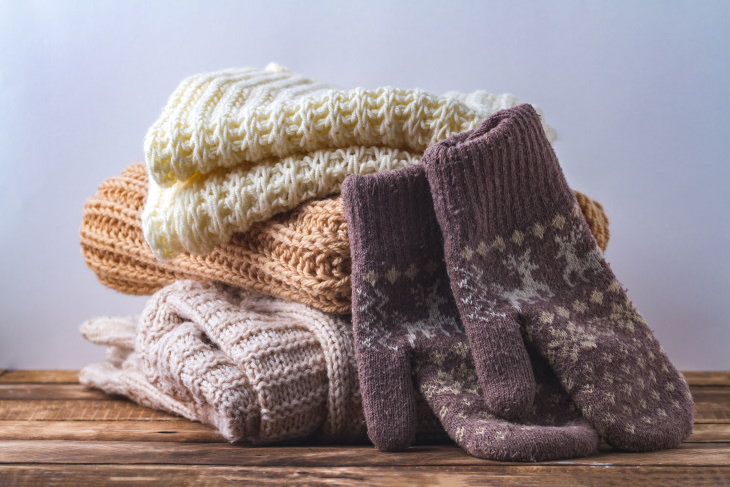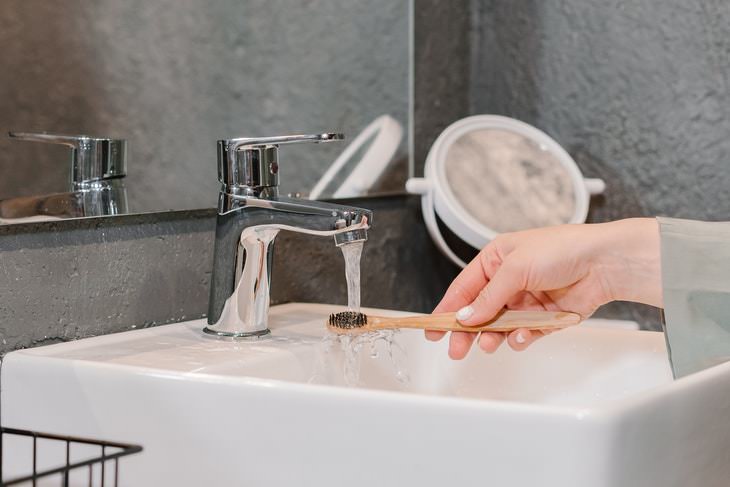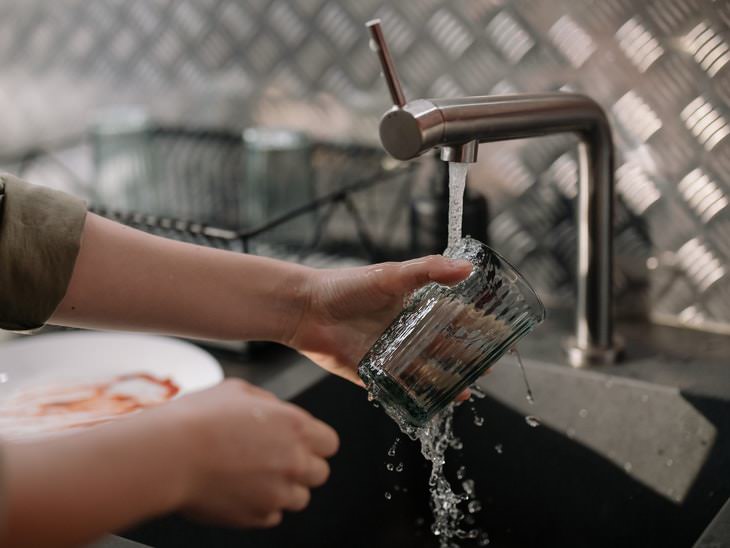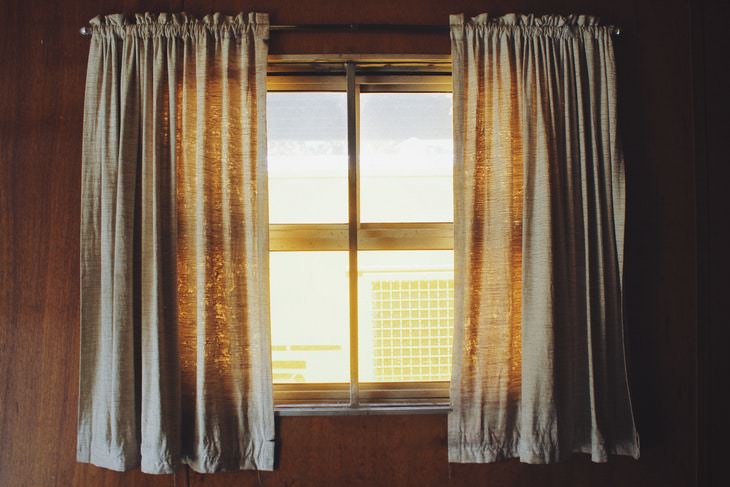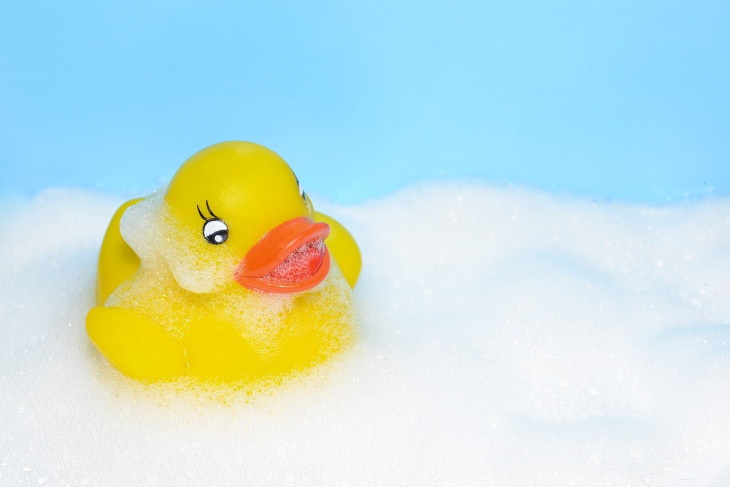1. Bed covers and decorative pillows
Bed covers, throw blankets, quilts, and decorative pillows are all a pain to clean. They’re often too big to fit into the washer together. because of their size and may require special cleaning products. The good news is, cleaning them once every 3-6 months is enough for most households. Unlike bed sheets and pillowcases, they don’t get in contact with human skin nearly as much, so washing them less frequently is just fine.
Unless you live in a home with many pets that like to relax on the sofa or your bed, washing your bed covers and pillows often is a waste of time.
2. Warm winter clothing
Winter clothing doesn’t require nearly as much washing and cleaning as summer clothing, especially the outer layers like parkas, coats, jackets, and scarves. Even wool sweaters only need to be washed a few times a year. As for most winter outerwear, experts say that it should only be cleaned once a year. When you notice a stain, spot-clean it and air out your winter clothing outdoors overnight to refresh it. You can do the same trick with your wool sweaters too, by the way.
3. Toothbrush
Provided that you replace your toothbrush every 3 months and store it properly, no extra cleaning is necessary. Just rinse well after using, and that’s pretty much it. As for the storage conditions, your toothbrush should be kept in a well-ventilated area and away from your toilet.
Even the American Dental Association notes all those special toothbrush cleaners are not necessary, stating that "There is insufficient clinical evidence to support that bacterial growth on toothbrushes will lead to specific adverse oral or systemic health effects."
4. Pantry
If you’re worried about food contamination and foodborne illness, it’s best to focus on your refrigerator, the place where we store raw and perishable foods, and NOT the kitchen pantry. Yes, it’s good practice to clear out the pantry from time to time, decluttering any expired foods and checking for insect contamination. But the pantry itself only needs a quick wiping down with a damp cloth once or twice a year.
5. Cats
Your dog requires a regular bath, especially after a prolific day of digging or a muddy walk. Cats are entirely different. If your cat stays mostly indoors and doesn’t have any health issues that prevent him from cleaning himself, you don’t need to wash him at all.
Cats are very clean animals - this is an evolutionary advantage that allowed the cats of the past to sneak through the forest and go unnoticed by both predators and prey. So, bathing your cat isn’t just a stressful time for all parties involved, it’s also completely unnecessary.
6. Prewashing dishes
When you’re rinsing the dishes before you put them in the dishwasher, leave some work for the dishwasher too. No need to pull out a sponge and start scrubbing, simply scrape off any big food particles and place the dishes into the dishwasher, even if they still look visibly dirty or greasy.
Pre-rinsing dishes isn’t only wasteful - costing an average household around 6,000 gallons of water yearly - it’s also unnecessary. The thing is, dishwasher detergent contains enzymes that are activated when they bind to grease and dirt, so the dishes actually need to be dirty for the detergent to work. So skip the pre-rinsing altogether.
7. Carpets and upholstery
When it comes to carpets and upholstered furniture, professional steam-cleaning once a year or even once in 2 years is the best way to go. Of course, your sofa and carpet require weekly vacuuming and spot cleaning, but that’s pretty much it. Trying to wash your sofa or carpet every season can actually do more harm than good, contributing to mold growth and musty smells.
8. Curtains
How often do you wash your curtains and drapes? According to professional cleaners, most curtains only require washing once a year. The only exception is kitchen drapes and curtains, which can catch more food stains if the window is next to a dining table or a work surface.
If you suffer from dust allergies, you can actually get rid of it without washing the curtains - just toss them into the dryer on the cold air cycle. Just make sure to run it on cold, as hot air could cause the fabric to shrink.
9. Bath toys
Plush and plastic toys require regular cleaning, there’s no question about it. But when it comes to bath toys, you can be a bit more lenient. The trick is to give each toy a quick rinse and let them drain and dry by handing them in a mesh bag after each use. How often do you need to deep clean bath toys? Once a month is enough - just soaking the toys for 15 minutes in a mix of warm water and vinegar, wipe them down with a clean sponge, and allow to air dry.
10. Oven
Surprisingly enough, cleaning the oven is on the weekly to-do list of a lot of people. It doesn’t have to be unless you’re a professional chef. As long you clean up any spills, your oven will work just fine if you only clean it twice a year. We recommend doing this sort of deep-cleaning not before but after holidays and celebrations - the time when the oven gets the most use.
11. Drains
If your kitchen sink or bathroom drain starts emitting odors or appears to be clogged, then, by all means, grab that drain cleaner and act quickly. But other than that, there’s no reason for you to unclog or clean the drain as a preventative measure. In fact, using chemicals or tools to clean the drain regularly can backfire because it can puncture the pipes and lead to leaks.
12. Ceiling fans and light fixtures
Save yourself a few trips up and down the ladder and avoid cleaning ceiling fans and light fixtures on a weekly basis. Dusting these places in your home is still essential, of course, but doing so only once a month is more than enough in most homes. When you do so, follow the top-to-bottom rule. This means that you should start from the topmost parts of the light and then move down to prevent dust from settling on the clean parts.
Please share these useful tips with others!


